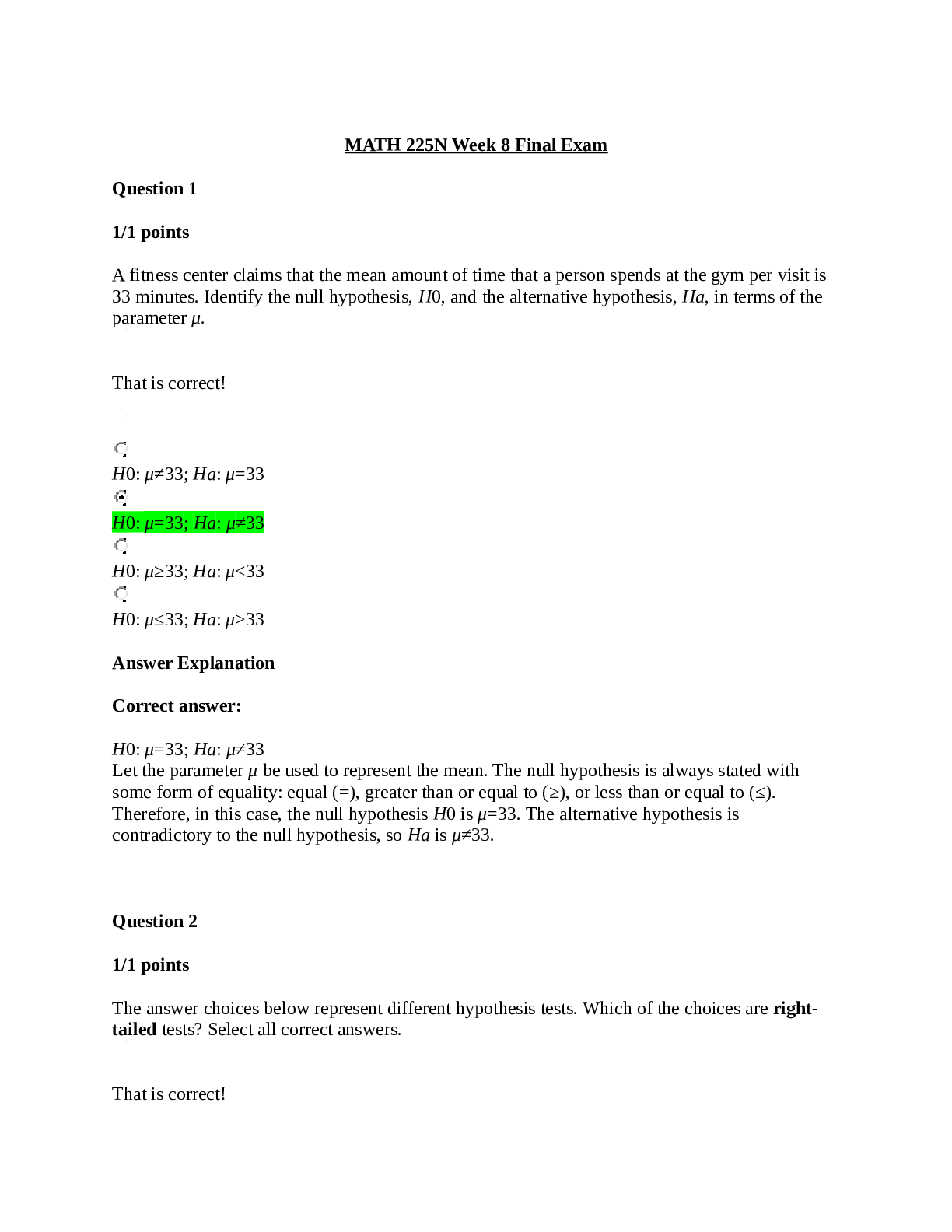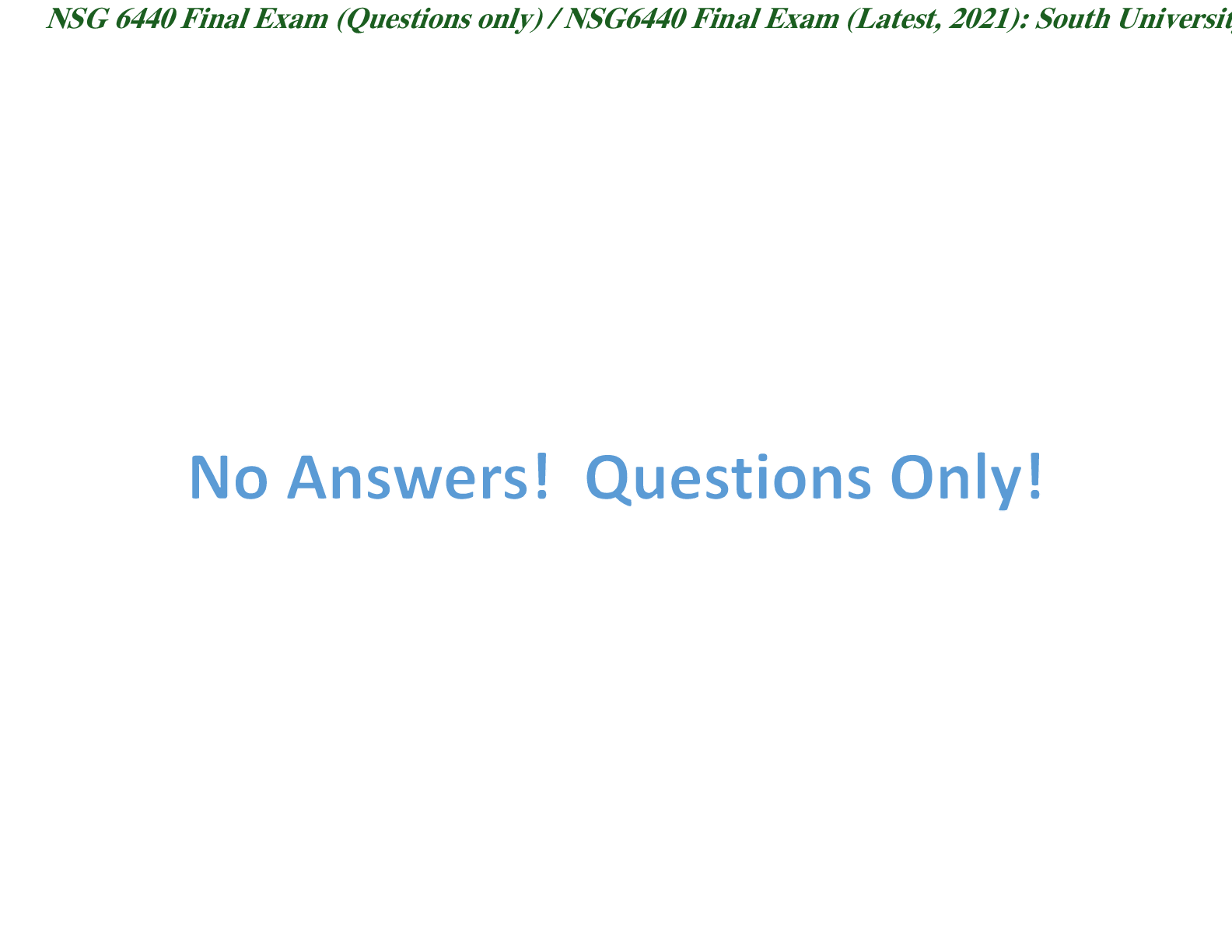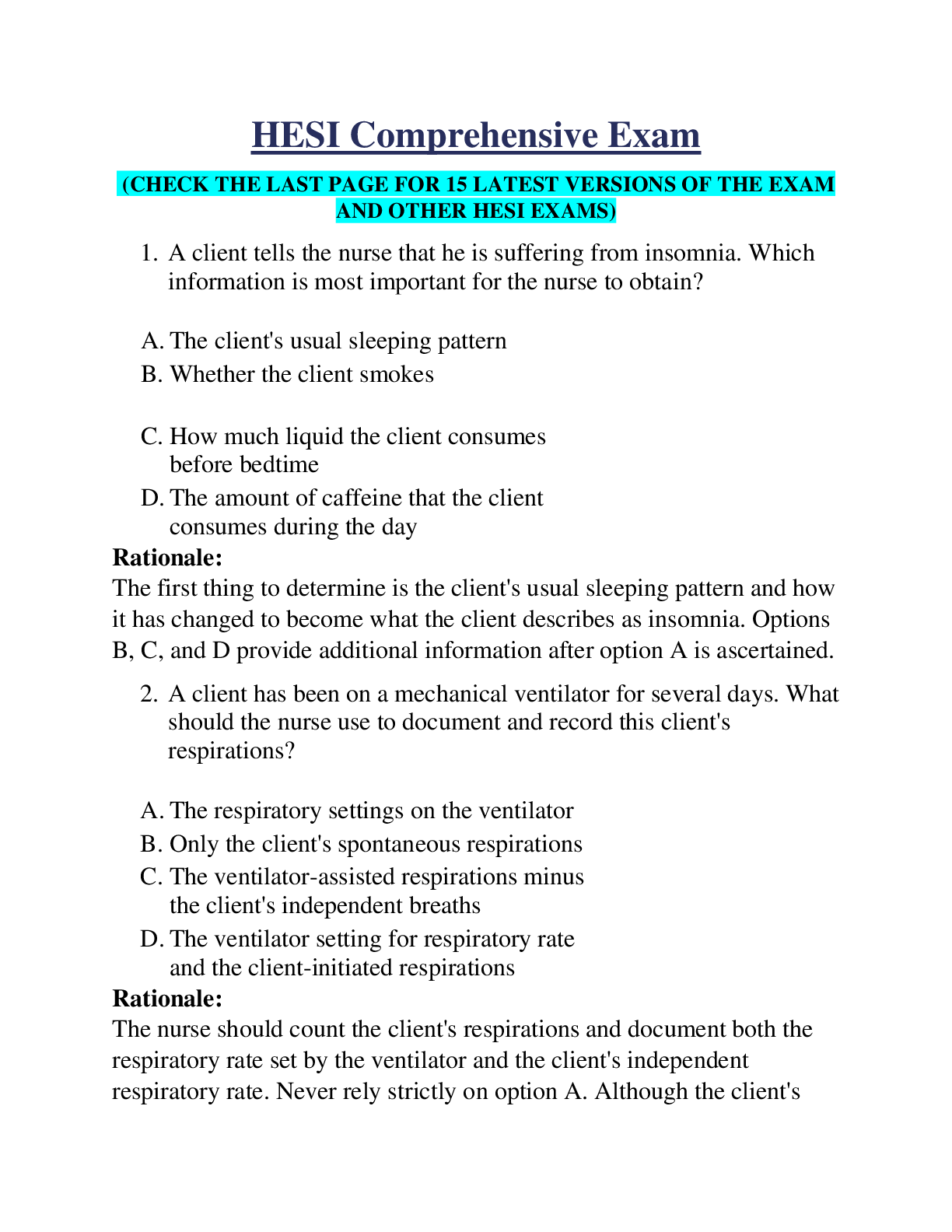*NURSING > Final Exam Review > NURSING 6560 final exam QUESTIONS WITH CORRECT ANSWERS (All)
NURSING 6560 final exam QUESTIONS WITH CORRECT ANSWERS
Document Content and Description Below
NURS-6560 Question 1 A patient with suspected Cushing’s syndrome is being evaluated to establish the diagnosis and cause. Patients with an adrenal tumor typically will demonstrate: Ques... tion 2 Pneumatosis, or gas cysts, may form in the wall anywhere along the gastrointestinal tract; in some cases, they will produce symptoms such as abdominal discomfort, diarrhea with mucus, and excess flatulence. Treatment of pneumatosis most often involves: Question 3 Jennifer is an RN applicant for a staff nurse position in the surgical ICU. She has had a screening PPD and comes back in 48 hours to have it read. There is a 12-mm induration at the site of injection. A chest radiograph is negative. The AGACNP knows that the next step in Jennifer’s evaluation and management should include: Question 4 P. E. is a 61-year-old female who presents for a postoperative visit following a gastric resection after a perforation of peptic ulcer. She reports feeling better, although it is taking longer than she expected. However, she says she is feeling better each day, her appetite is returning, and her incision is healing well. She is being discharged from surgical care and advised to continue her routine health promotion follow-up with her primary care provider. As part of her surgical discharge teaching, the AGACNP counsels P. E. that as a result of her gastric resection she will need lifelong follow-up of: Question 5 M. T. is a 71-year-old female who presents for evaluation of a ―lump on her chest.‖ She denies any symptoms—there is no pain, erythema, edema, ecchymosis, or open areas—it is just a lump. She has no idea how long it has been there and just noticed it a few weeks ago. Physical examination reveals a round, smooth, flesh-colored tumor. It is firm but not hard; it has smooth borders. It measures 6 cm in diameter and is non-tender to palpation. The AGACNP suspects that this is a classic presentation of the most common chest wall tumor known as a: Question 6 The AGACNP is receiving report from the recovery room on a patient who just had surgical resection for pheochromocytoma. He knows that which class of drugs should be available immediately to manage hypertensive crisis, a possible consequence of physical manipulation of the adrenal medulla? uestion 7 In myelodysplastic syndromes, the primary indications for splenectomy include: Question 8 The AGACNP is evaluating a patient who reportedly fell down a flight of steps. Her history is significant for several emergency room visits, but she denies any significant medical conditions. Some documentation in her chart indicates that she may have been subjected to physical abuse. Today she presents with a periorbital ecchymosis of the left eye and swelling in the left side of the face. Her neurologic examination is within normal limits. Which head imaging study would be most useful in assessing for findings consistent with a history of abuse? Question 9 The AGACNP is treating a patient with ascites. After a regimen of 200 mg of spironolactone daily, the patient demonstrates a weight loss of 0.75 kg/day. The best approach to this patient’s management is to: Which of the following is a true statement with respect to the use of corticosteroids in posttransplant patients? Question 11 K. T. presents for a routine wellness examination, and the review of systems is significant only for a markedly decreased capacity for intake and a vague sense of nausea after eating. K. T. denies any other symptoms; the remainder of the GI review of systems is negative. His medical history is significant for complicated peptic ulcer disease that finally required resection for a perforated ulcer. The AGACNP advises the patient that: Question 12 The AGACNP is rounding on a patient following splenectomy for idiopathic thrombocytopenia purpura. On postoperative day 2, a review of the laboratory studies is expected to reveal: Question 13 A patient being monitored post-heart transplant suffers a bradyarrhythmia. The AGACNP knows that which of the following medications is not indicated as part of emergency intervention for bradycardic abnormalities in a posttransplant patient? Question 14 Ms. Carpenter is a 28-year-old female who presents in significant pain; she indicates that the discomfort is in the right lower quadrant. The discomfort is colicky in nature and has the patient in tears. Which of the following associated findings increases the index of suspicion for ureteral colic? Question 22 Which of the following is not a true statement with respect to decision making for a cognitively impaired patient? Question 23 Hepatic encephalopathy is a clinical syndrome seen in patients with chronic liver disease; its presentation may range from mild personality changes, to psychosis, to coma. The primary chemical mediators of hepatic encephalopathy include all of the following except: Question 24 Ross A. is a 38-year-old who has just had a kidney transplant. The AGACNP knows that, due to the characteristic and anticipated response of transplanted kidneys, the patient requires: Question 25 Janice is a 32-year-old female who presents for evaluation of abdominal pain. She has no significant medical or surgical history and denies any history of ulcers, reflux, or gastritis. However, she is now in significant pain and is afraid something is ―really wrong.‖ She describes what started out as a dull discomfort in the upper part of her stomach a few hours ago but has now become more profound and centered on the right side just under her ribcage. She has not vomited but says she feels nauseous. Physical exam reveals normal vital signs except for a pulse of 117 bpm. She is clearly uncomfortable, and palpation of the abdomen reveals tenderness with deep palpation of the right upper quadrant. The AGACNP orders which imaging study to investigate the likely cause? Question 26 Justin F. is seen in the emergency department with an 8-cm jagged laceration on the dorsal surface of his right forearm. He says he was working with his brother-in-law yesterday morning building a deck on the back of his home. A pile of wooden planks fell on top of him, and he sustained a variety of cuts and superficial injuries. He cleaned the wound with soap and water but didn’t want to go to the emergency room because he didn’t want to risk being in the waiting room for hours. He wrapped up his arm and went back to work, and then took a normal shower and went to bed last night. This morning the cut on his arm was still flapping open, and he realized he needed sutures. The appropriate management of this patient includes: Question 26 Justin F. is seen in the emergency department with an 8-cm jagged laceration on the dorsal surface of his right forearm. He says he was working with his brother-in-law yesterday morning building a deck on the back of his home. A pile of wooden planks fell on top of him, and he sustained a variety of cuts and superficial injuries. He cleaned the wound with soap and water but didn’t want to go to the emergency room because he didn’t want to risk being in the waiting room for hours. He wrapped up his arm and went back to work, and then took a normal shower and went to bed last night. This morning the cut on his arm was still flapping open, and he realized he needed sutures. The appropriate management of this patient includes: Question 27 T. O. is a 44-year-old female patient who presents for evaluation of sudden, severe upper abdominal pain. She is clear about the onset, which was profound and occurred approximately one hour ago. She denies that the onset had any relationship to food or eating, and she denies nausea or vomiting. On examination, she is lying on her right side with her hips and knees flexed to draw her knees to her chest. Vital signs are stable, but examination reveals involuntary guarding. The abdomen is painful and tympanic to percussion in all quadrants. CBC reveals a white blood cell count of 15,600/µL. The AGACNP suspects: Question 28 A 42-year-old woman presents to the emergency department after being raped. The AGACNP examines her and realizes that the patient’s husband is the rapist. The patient does not want to press charges and wants to return home with her husband. The AGACNP’s initial action should be to: M. R. is a 52-year-old female who presents complaining of significant abdominal pain, which she rates as 8 to 9 on a 1 to 10 scale. The pain has been going on for a matter of hours, and she is afraid it won’t go away on its own. She denies any nausea or vomiting, and she cannot remember precisely when her last bowel movement occurred; probably it was a few days ago. She reports that she is ―always‖ constipated. On physical examination, she is tachycardic but otherwise has normal vital signs; her abdomen is tensely rigid, but no point tenderness to palpation is appreciated. The entire abdomen percusses as tympanic—there is no distinct dullness over the upper quadrants. Bowel sounds are present but hypoactive and intermittent. There is rebound tenderness to palpation. The AGACNP suspects: Question 30 C. V. is a 70-year-old African American male patient who presents for surgical consultation. His history includes 4 months of severe hypertension that has been poorly responsive to medication. He also complains of intermittent pounding headaches, palpitations, and a vague sense of anxiety with tremors. A 24-hour urine demonstrated elevated metanephrines. The AGACNP recognizes that this patient has a: Question 37 Based upon an understanding of the normal relationship between gastrin levels and acid secretion, the AGACNP recognizes that which of the following combinations is almost ………………………….CONTINUED……………………………….. [Show More]
Last updated: 1 year ago
Preview 1 out of 31 pages
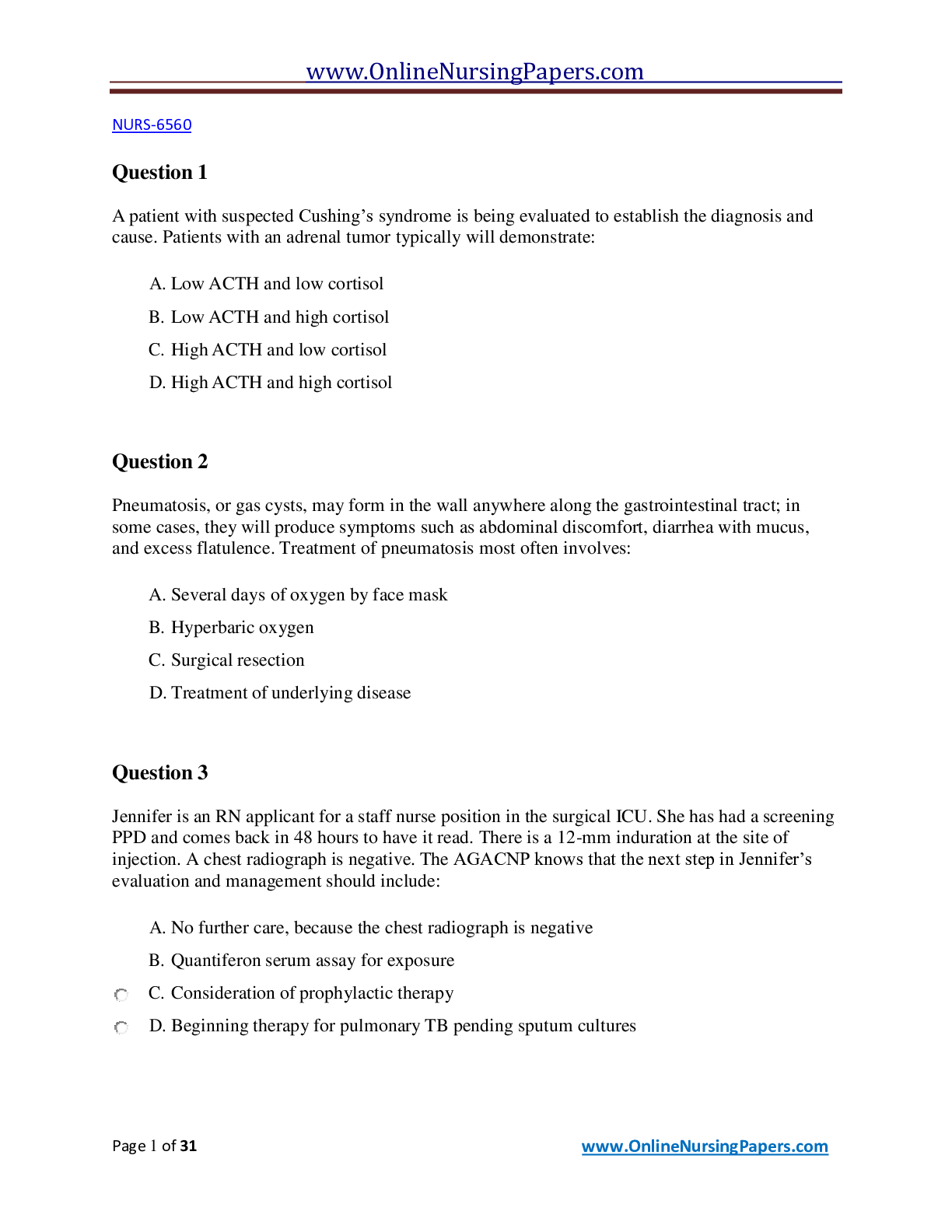
Reviews( 0 )
Document information
Connected school, study & course
About the document
Uploaded On
Mar 20, 2021
Number of pages
31
Written in
Additional information
This document has been written for:
Uploaded
Mar 20, 2021
Downloads
0
Views
71

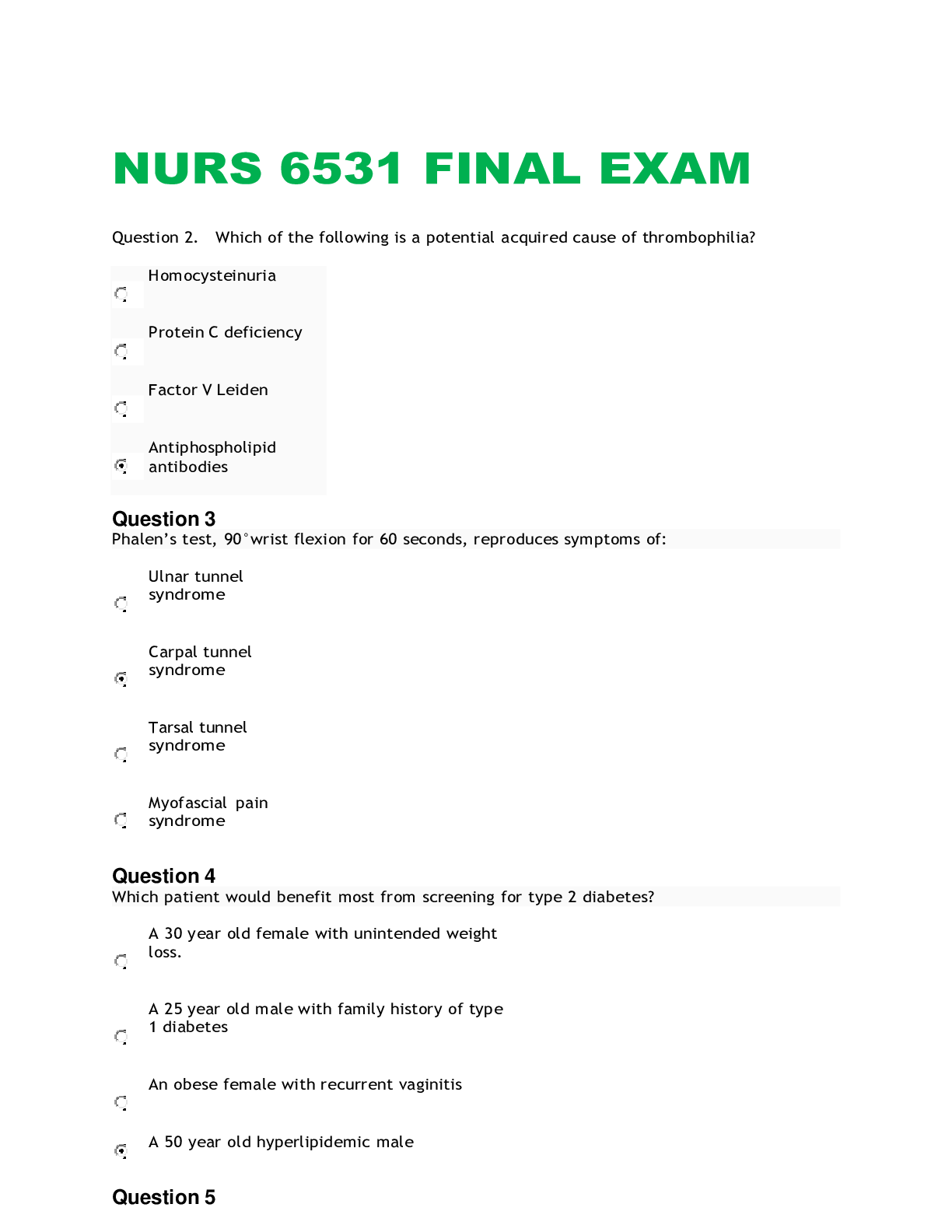


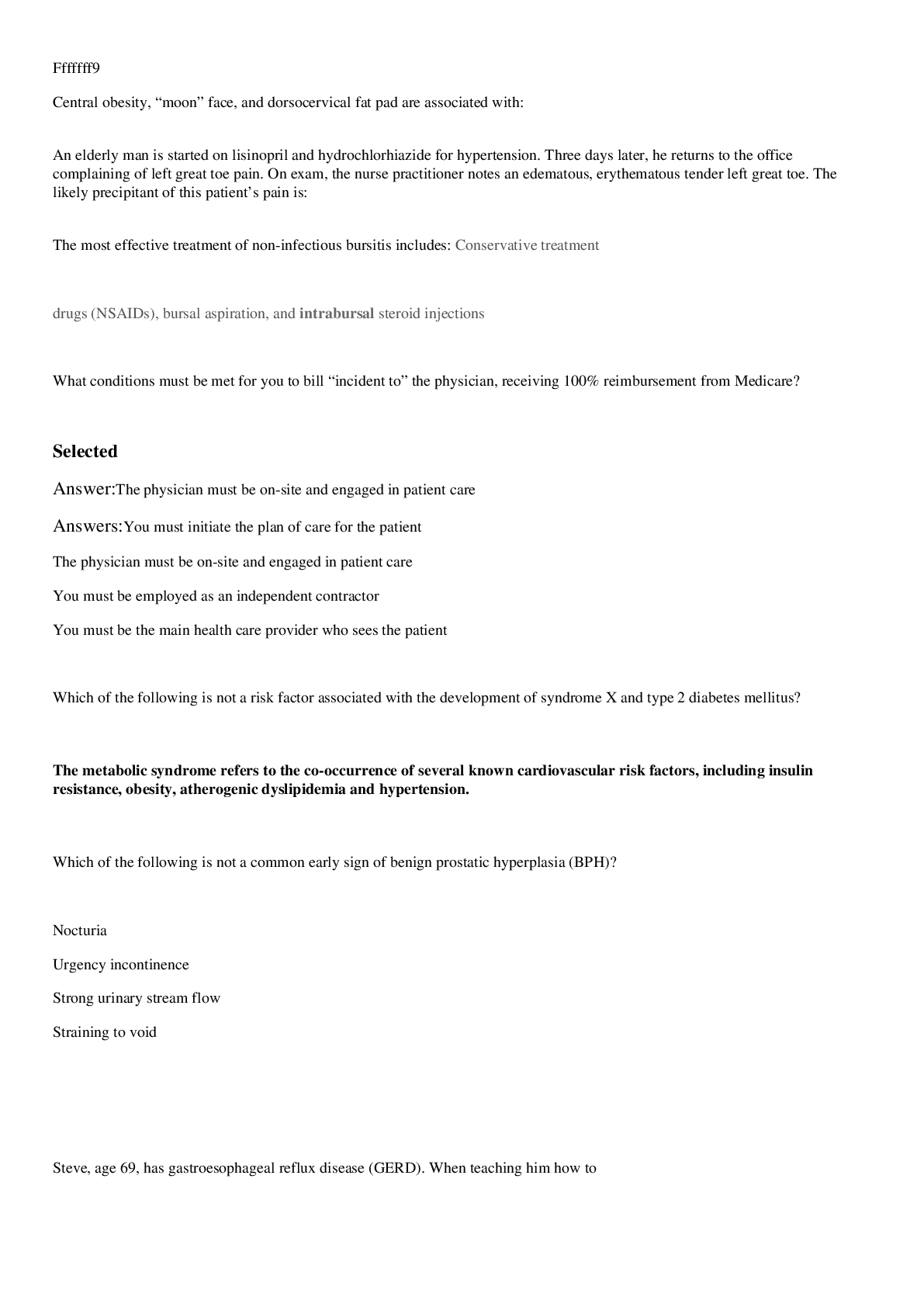


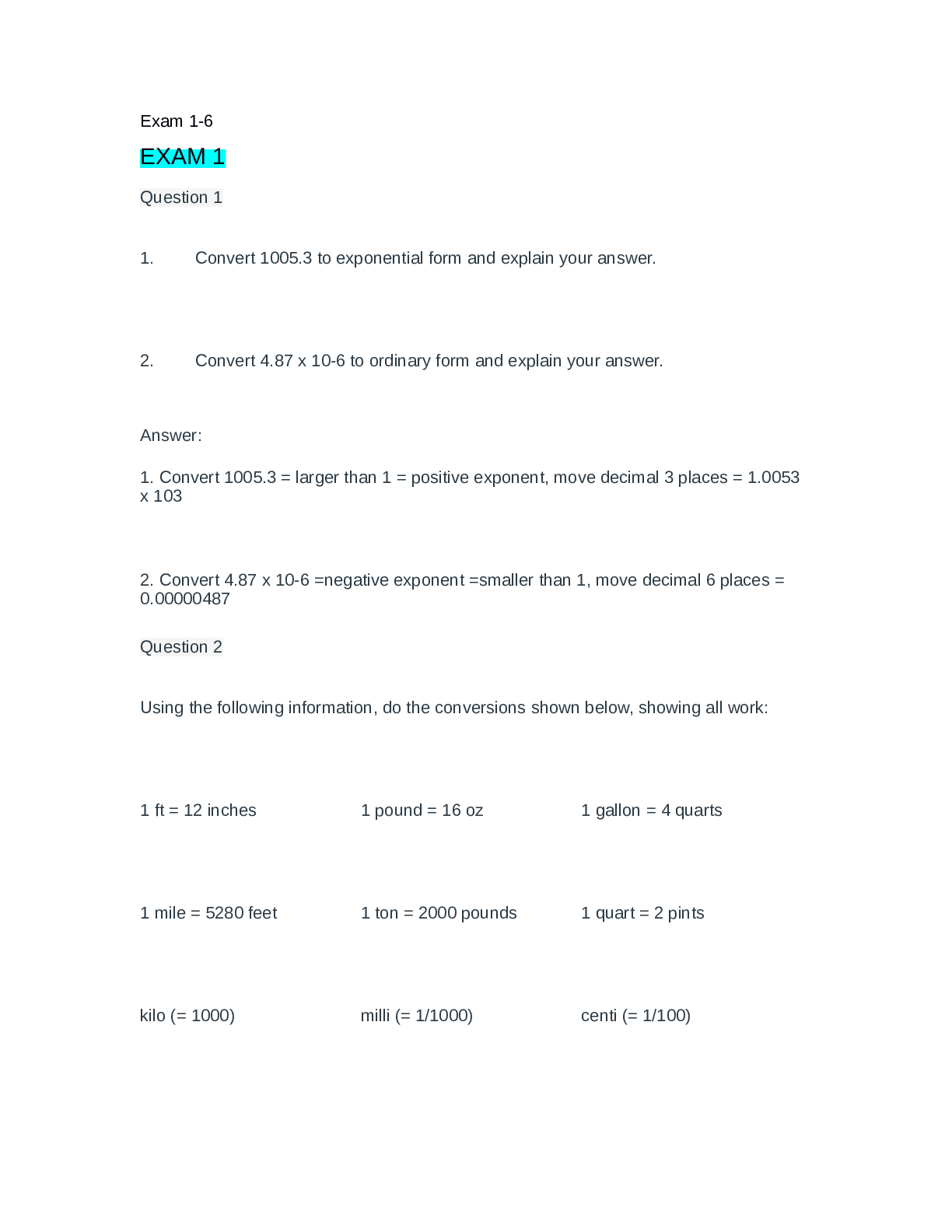
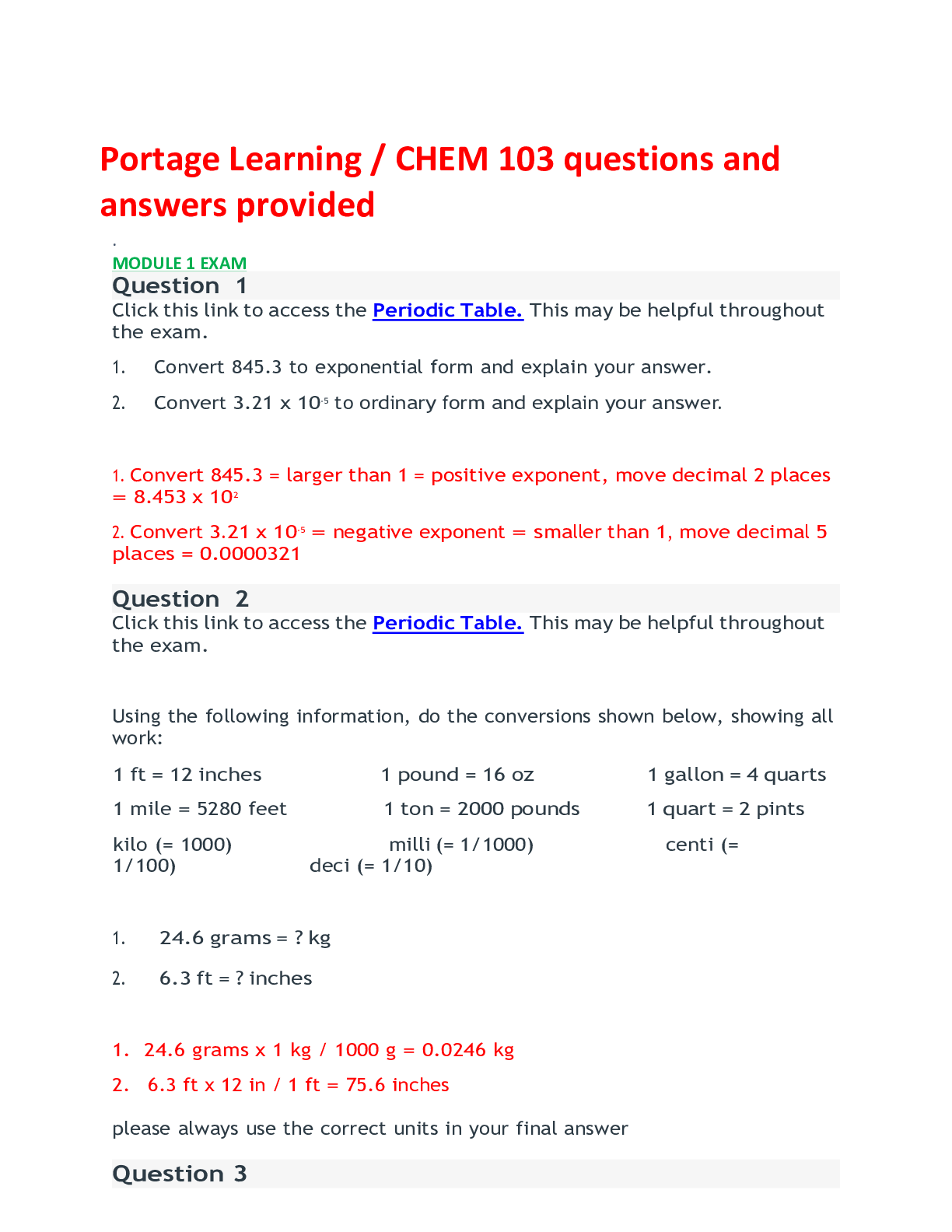
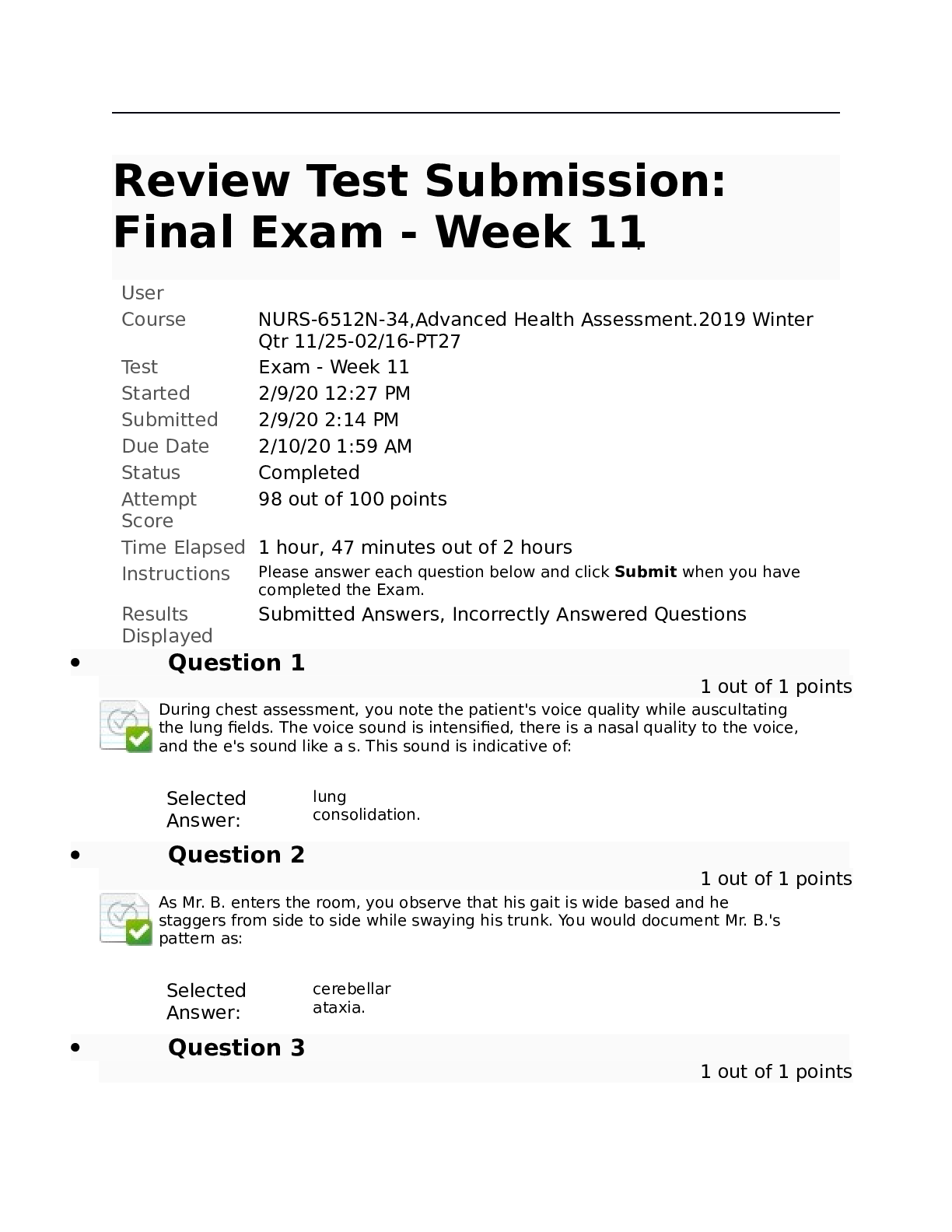
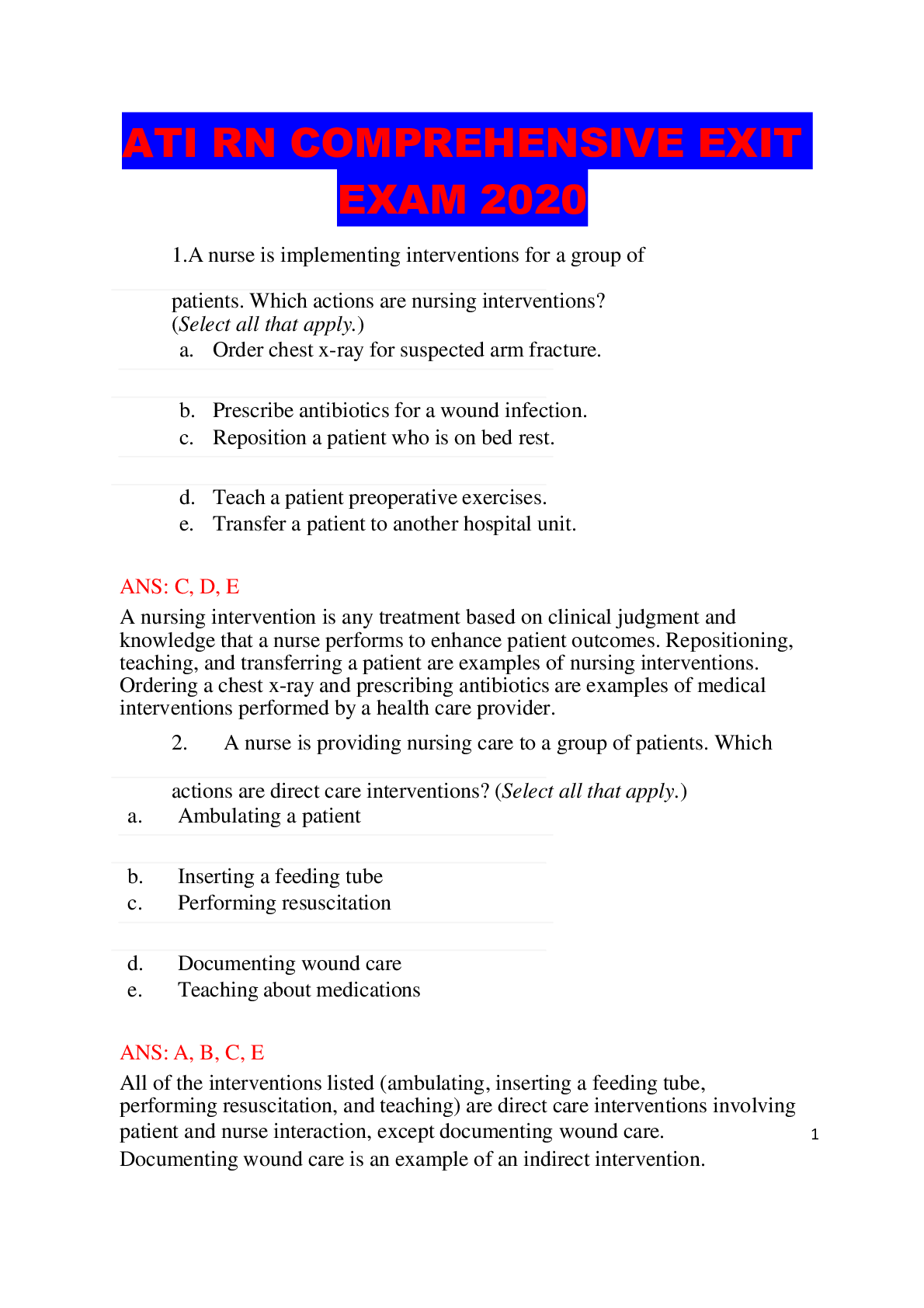

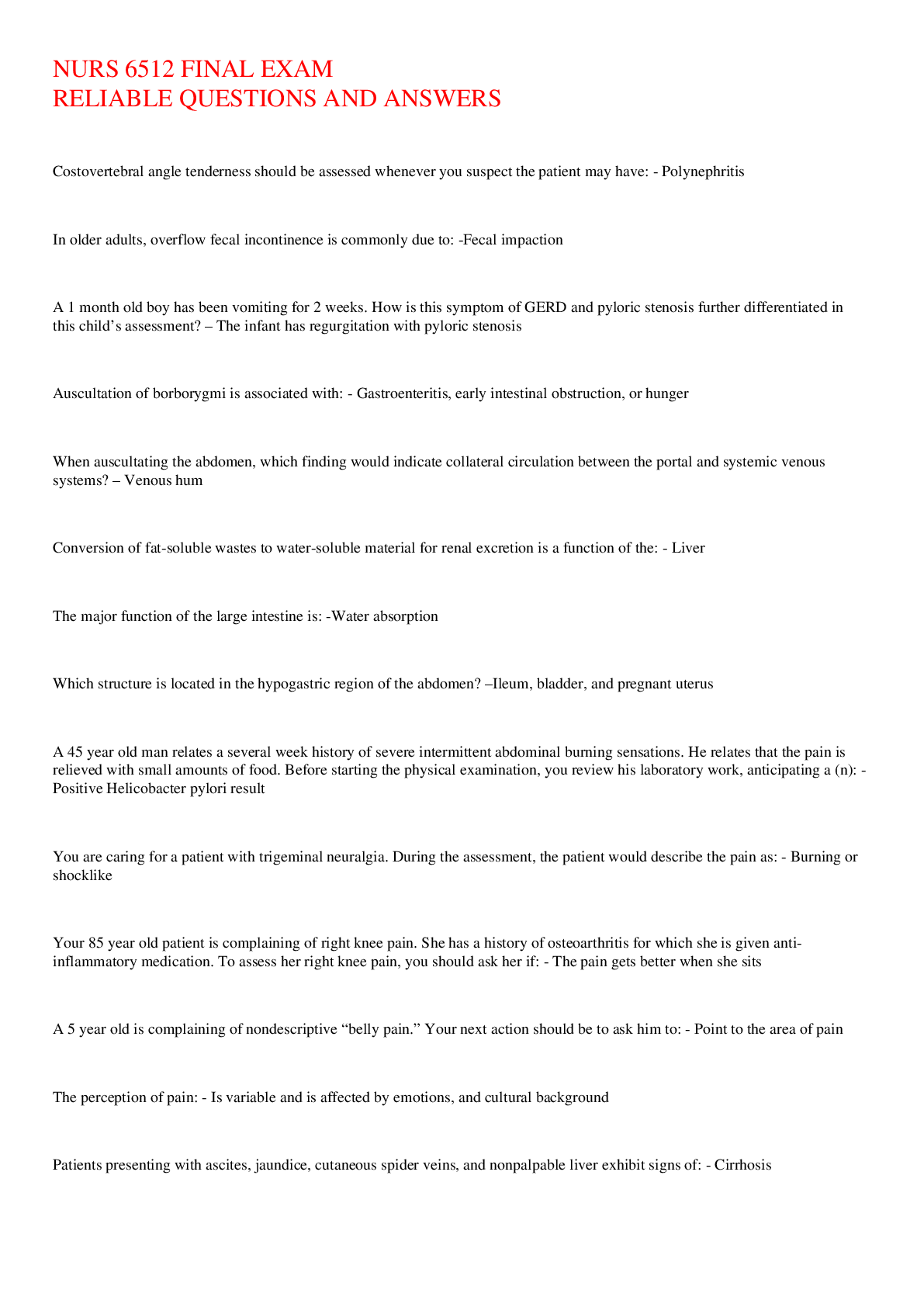
.png)
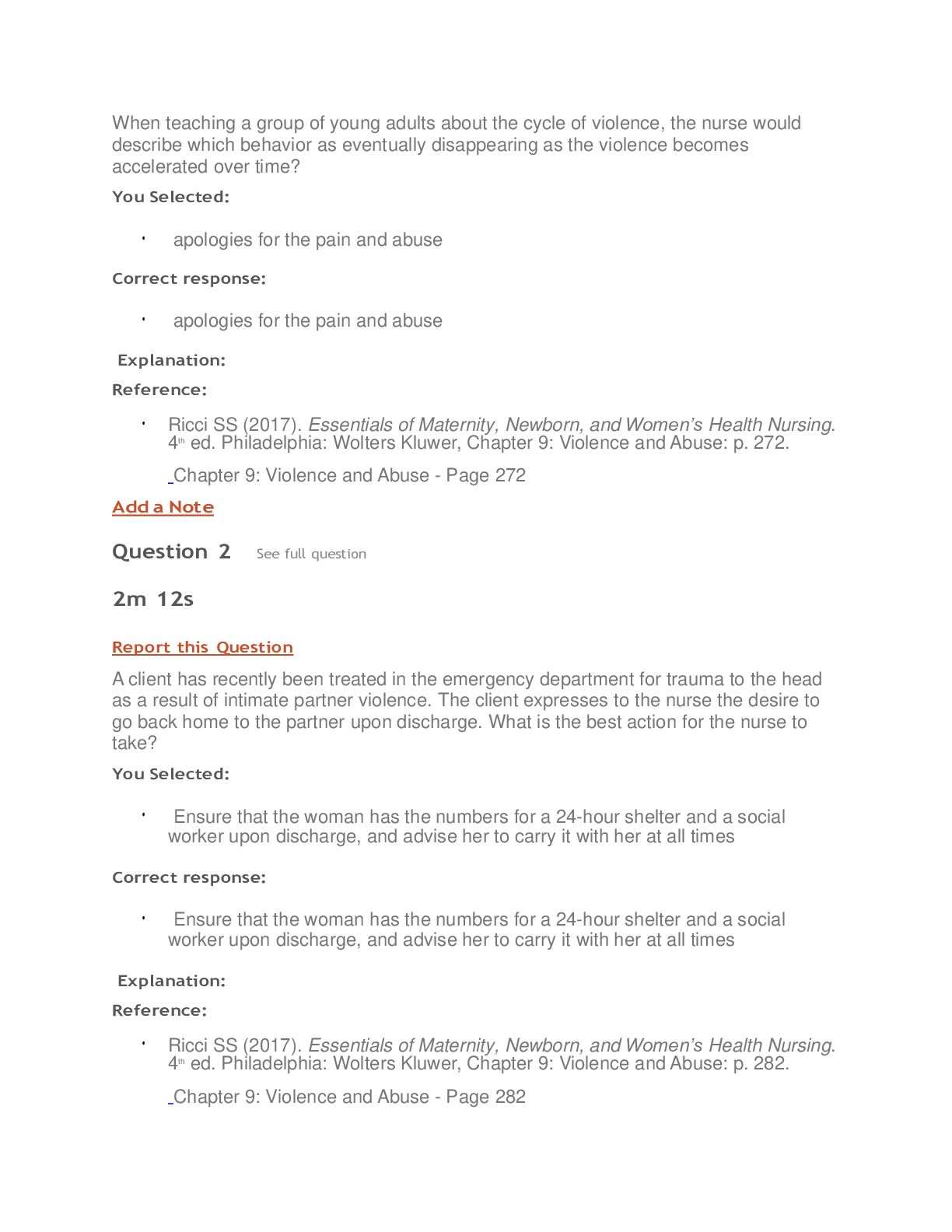

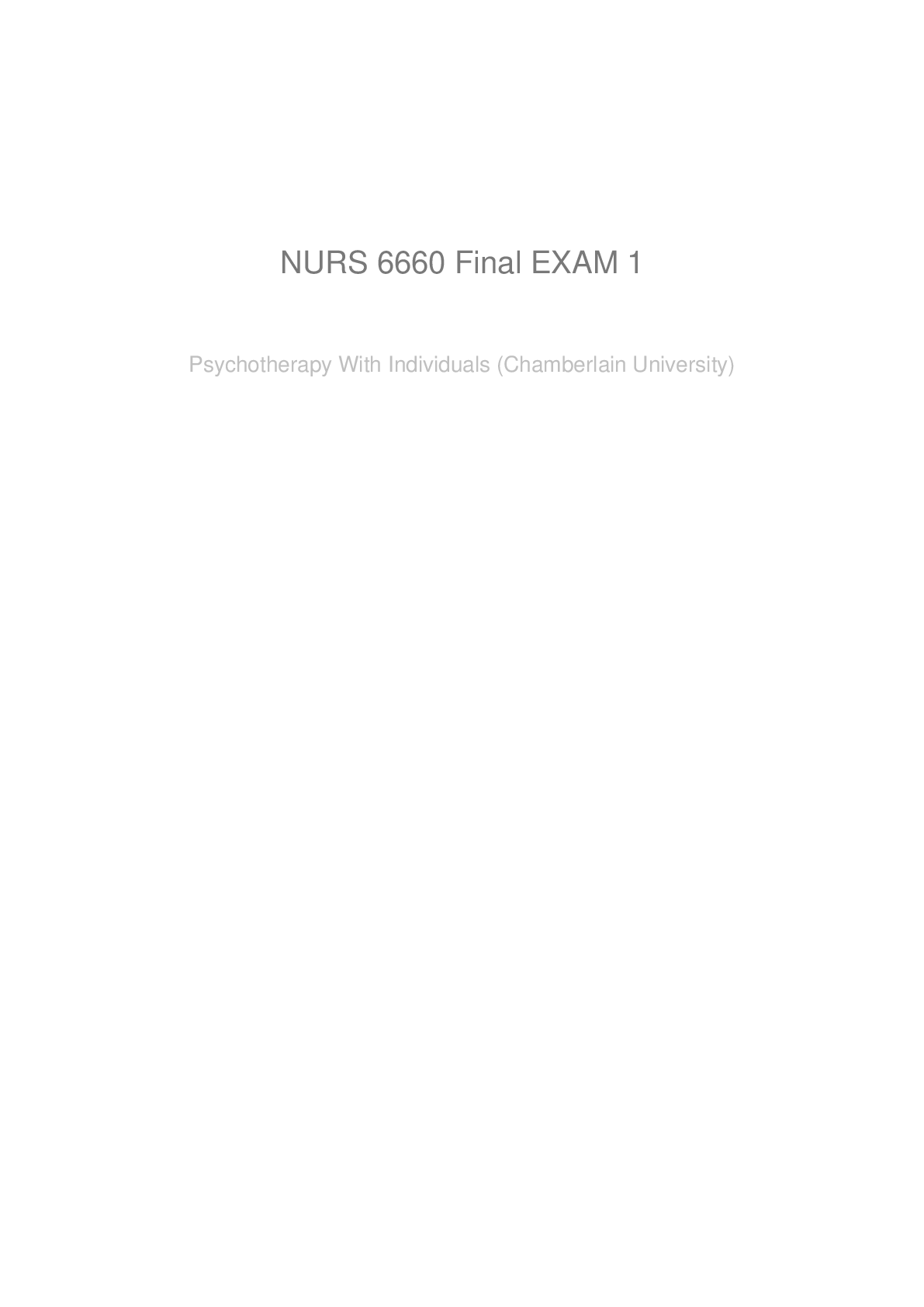

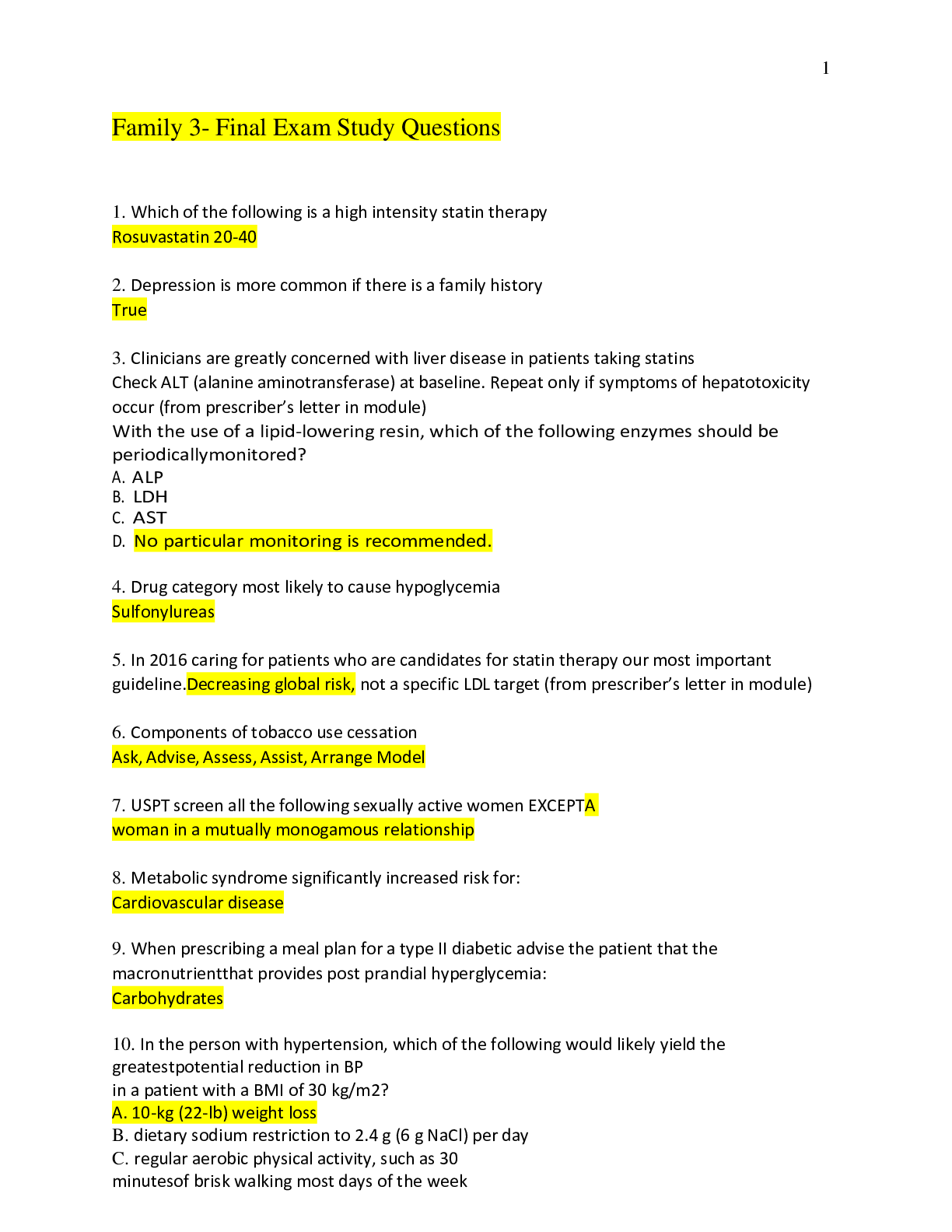
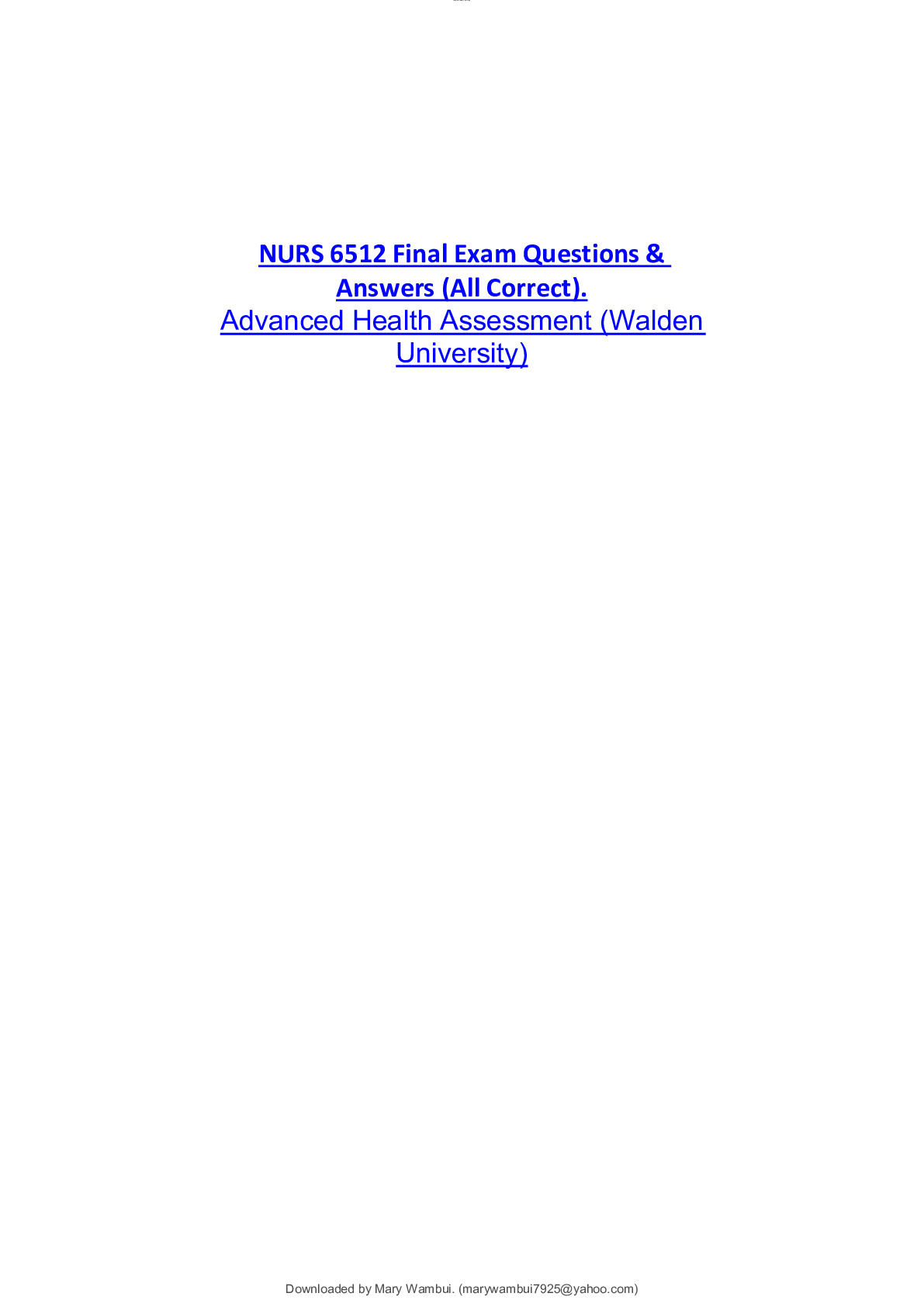




NURS6521.png)
